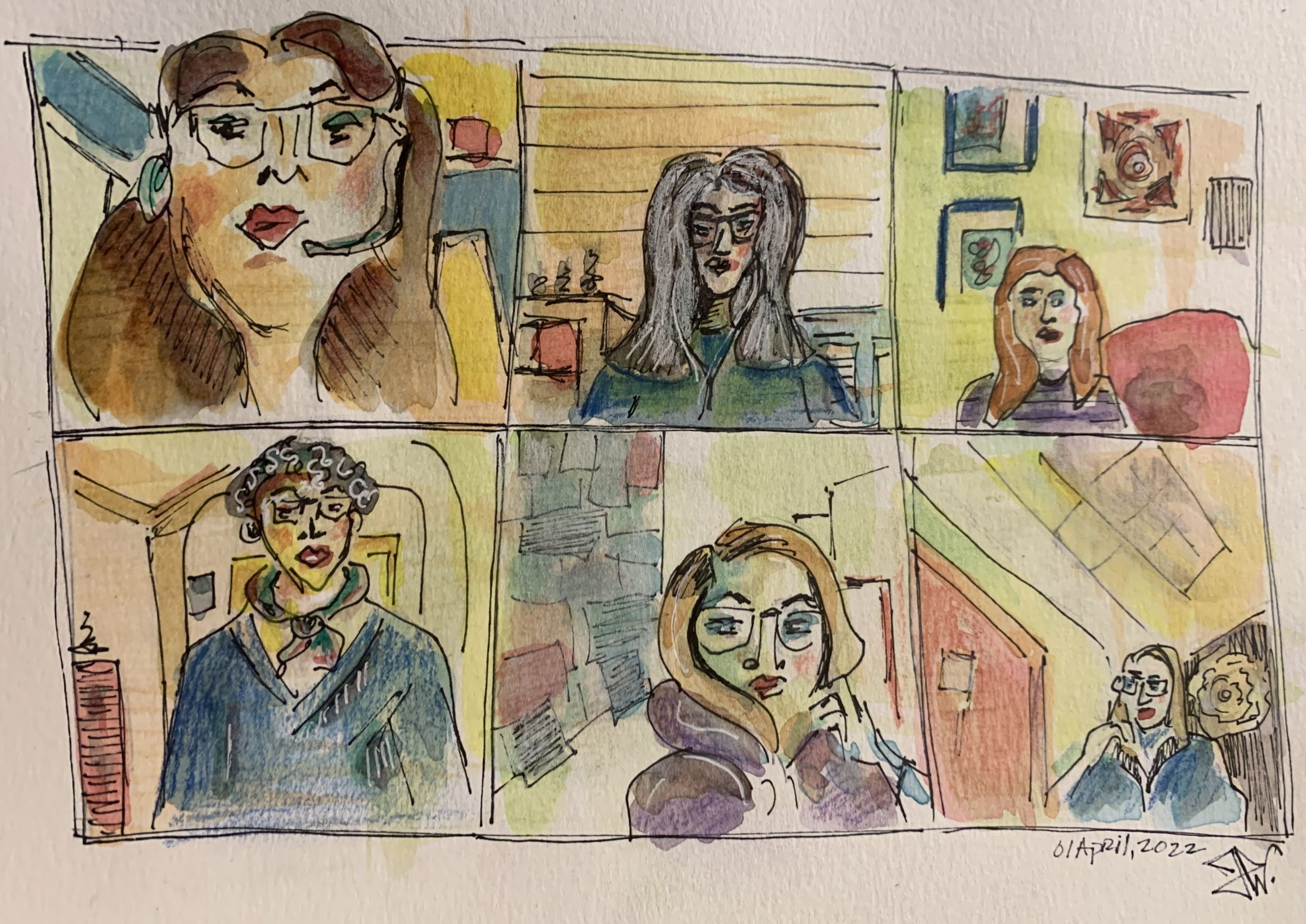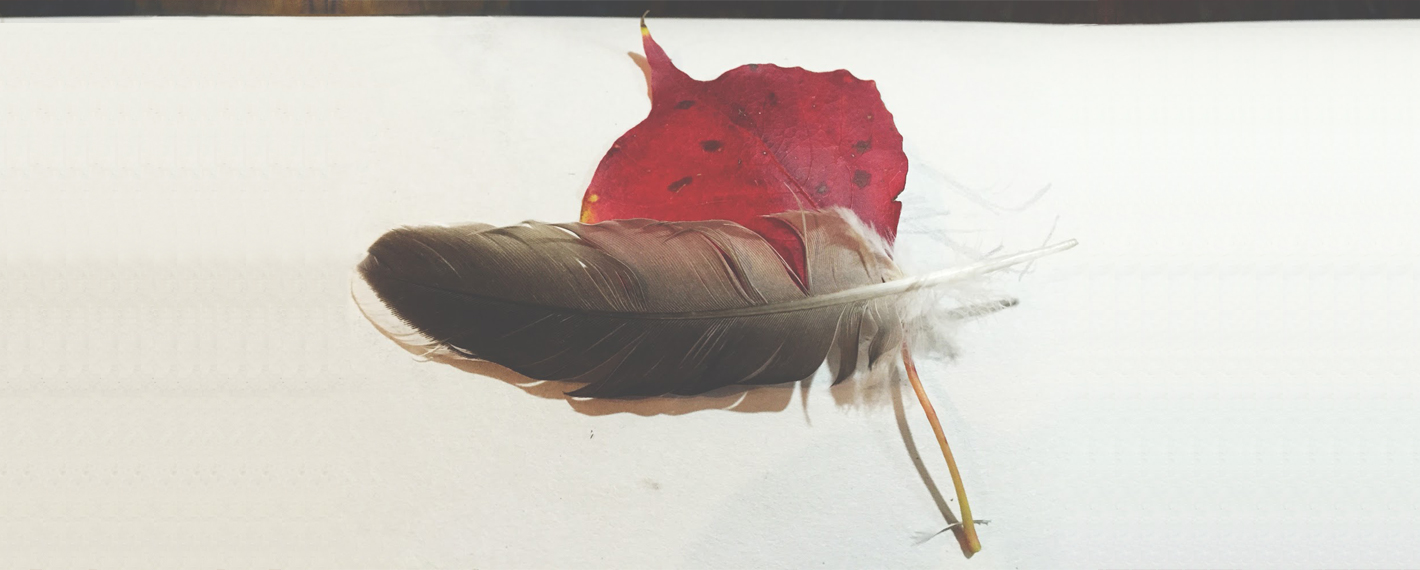
It’s spring in Austin, Texas and the weather is finally bright, sunny, and a perfect temperature to be outside for that one week before the pollination season begins (and we all start to wonder if it’s allergies or COVID again). By all means, get outside, enjoy the day, and take advantage of this window of joy.
When you are done enjoying the day, come back and let’s chat about showing up for yourself and your creativity by scheduling, hosting, and/or attending a zoom meet-up.
After two years of endless zoom calls, why would I recommend using zoom meet-ups to motivate you to show up to your writing desk or art studio? Because they work if you let them.
Virtual meet-ups continue to provide an opportunity to jump start “studio or writing time” while keeping you in the studio or at your desk. There is no wasted time driving or FOMO (fear of missing out) if you live too far away for an in-person meet-up. And, let’s not forget there is still a large number of people that need to remain vigilant about protecting their health and immunity. Virtual meet-ups can also help connect people from a larger geographical area.
What is it like to attend a virtual meet-up?
Before offering advice to my creativity clients, I like to experience the advice or activity and take note of how I feel, what the protocol is or isn’t, and other options. In the past two months I’ve attended dozens of write-ins, meet-ups, virtual open studios, and they have all helped me show up to the page (writing) and to my art studio. I’m finding that even attending a meet-up for thirty minutes helps me get a short prompt completed. Meeting virtually can be a little intimidating but it gets easier each time you try it.
If you are having trouble showing up for your creative practice then consider attending or organizing your own meet-up.
The Writers' League of Texas hosts a silent virtual write-in two times a month. Find a WLT write-in here
The benefits of creative meet-ups can include:
- helping build a sense of community between like minded individuals.
- providing opportunities to build relationships or start new ones.
- providing a tool for individual accountability
- providing a motivational tool to get a task completed
- opportunity to test out accountability partners and critique groups.
- increase self-esteem
The first type of meet-up where the rules are set and attendees are asked to turn off their mics and get to work are geared more toward working and less towards socializing. Even still, during the “silent” meet-ups, there is usually a bit of time at the end to discuss or share. Staying until the end provides an opportunity to listen to what others are working on and helps create a sense of community. It is fun to see the same faces every week/month and slowly begin to create relationships. It can seem a little odd to sit on a zoom call that’s completely silent and I get a funny look from people when I describe this type of “silent” meet-up. I get asked, “…but why would you sit on a zoom call without anyone talking? Why don’t you just write?” Why indeed. Staying on a zoom call with the camera off simulates an IRL (in real life) write-in where everyone is asked to be silent for a specific amount of time (heads down and working). Everyone staying on the zoom call can hold you accountable to keep working.
Tips: Attending or hosting a virtual write-in:
- have a host assigned who is responsible for starting the meeting on time and gives an introduction as well as time updates in the chat
- arrive on time to listen to the write-in protocols so you know what to expect
- use the chat to introduce yourself, discuss what your goal is for the session, and comment on others
- write down contact information of attendees who are open to communicating after the session
- get off the chat after the first 5 or ten minutes
- have something to work on during the write-in
- bring a writing-prompt to work on
- use the time for free-association writing (writing anything that comes to mind without judgment then use any ideas that come up as inspiration for future write-ins)
- stay in the discomfort of wanting to quit and acknowledge your feelings of resistance and procrastination
- share something about yourself, your experience, or your writing at the end of the session (this is how you build community)
- schedule your next session (put the time and date in your calendar)
- always thank the host for setting up the meet-up
Tips: Attending or hosting a virtual “SILENT” open studio:
- have a host who starts the meeting on time and gives an introduction as well as time updates in the chat
- after introduction, ask attendees to position cameras so that others can see their work area
- make open studio sessions one-hour vs. a three-hour write-in
- arrive on time to listen to the write-in protocols so you know what to expect
- use the chat to introduce yourself, discuss what your goal is for the open studio, and comment on each others chat messages
- write down contact information for attendees who are open to communicating after the session
- get off the chat after the first 5 or ten minutes
- have something specific to work on during the open studio and have all your materials nearby
- bring a sketchbook prompt to start your creativity time
- stay in the discomfort of wanting to quit before the end and acknowledge your feelings of resistance and procrastination.
- share something about yourself, your experience, or your artwork at the end of the session
(this is how you build community) - schedule your next session (put the time and date in your calendar)
- always thank the host for setting up the meet-up
The second type of meet-up is geared toward building community, networking, and has a more relaxed and open set-up. Attendees are encouraged to work while also sharing their work, tips, tricks, ideas, and industry news. Attendees are also encouraged to keep their camera on and if the group is small enough everyone leaves their mic on and takes turn talking. The host is responsible for setting the tone of the meetup. I have found that attendees will normally follow what the host is doing. Both types of meet-ups (social and working) are important for artist and writers. The more I attend open studios the more I can work whether others are talking or not. I create a space to work on either a writing and/or art related project.
Tips: working during social open-studio or write-ins:
- set up your space to do something creative while you are socializing
- use a laptop or put your phone on a stand to keep your hands free
(you never know when the inspiration to work might strike) - If you are working on a laptop, position it on top of a book or box
(if you spill something on your desk it help keep the laptop from getting damaged) - have a journal or sketchbook and pens or pencil nearby
- go analog and write in a journal instead of an a computer
- write one word you hear on the call – see where that leads
- cut out magazine words and create a poem
- keep a set of colored pencils, pens, or oil pastels, and glue stick in a small container to make it easy to change art mediums
- consider using this time to cut out collage pieces from magazines (words and images)
- consider using this time to complete a task that doesn’t require your attention
(creating abstract backgrounds for future projects) - use watercolor brushes instead of brush and water container to reduce the number of items on your desk
- move your laptop or keyboard to the back of your desk to give you room to position your sketchbook/drawing surface in front of you
- draw your zoom screen attendees.
(Carla Sonheim had a wonderful workshop called Stylized Zoom Portraits during the 2022 Sketchbook Revival)
Creating is normally a very solitary activity and attending a virtual write-in or open studio can help one feel less isolated but not take you away from your creative space. It also gives one the opportunity to meet other creatives. If you are looking for a critique group one of the best places to find them is during a meet-up because there are other people there just as committed as you are.
Congratulate yourself for showing up. If that’s all that happens today that is enough then consider showing up again. Show up enough times and you will begin to make this a habit. Make showing up a habit and you can begin to make goals for your creativity. Goals lead to action.


